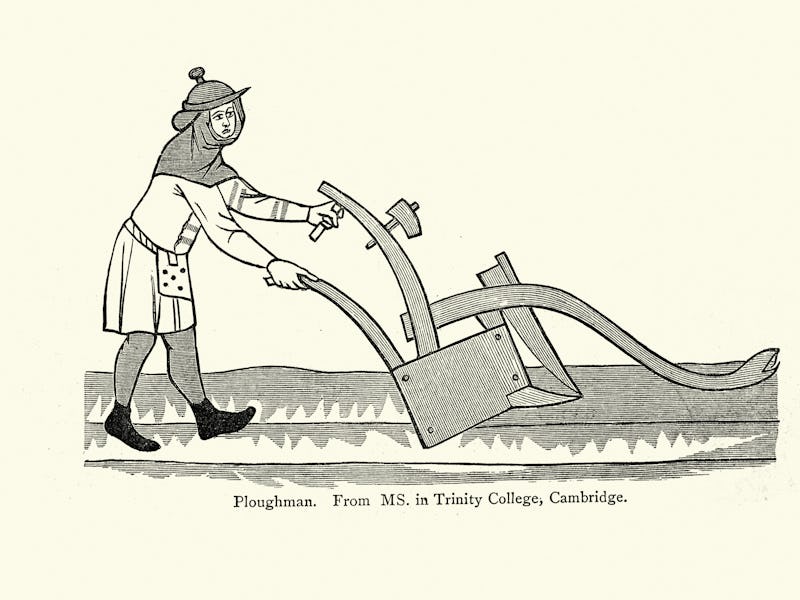Key moment in human history reveals our effect on the natural world
"Peat is an important natural archive."

Mother Nature remembers everything. Her records display the full scope of history, as far back as when dinosaurs trampled the Earth and weird ancient amphibians roamed, or further still — when our oceans teemed with strange aquatic creatures.
A new study published Thursday in Scientific Reports reveals the lessons that can be trapped in the very earth — a peatland near the village of Łagów in western Poland with a turbulent history. Embedded in the soil are telltale signs of a critical moment in human cultural evolution.
Pawski Ług peatland. The site is dominated by Sphagnum since 14th century and time of the loss of pristine forest.
Time Travel — In this study, the researchers traced the past 1500 years of human development hidden in the Polish peatland. Peat, a fossil fuel that consists of decaying vegetation and resembles soil, is an important and often-overlooked environmental record keeper.
"The peat is an important natural archive that records the human activity that took place in the last several thousands of years," Mariusz Lamentowicz, lead author on the study and a researcher at Adam Mickiewicz University in Poland, tells Inverse.
"When peat grows rapidly, it records the information in high resolution and very good quality," he explains.
This particular corner of western Poland started out as a wetland, with pristine virgin forests. And then humans came along. With us, came the emergence of a farming economy, precipitating a rapid increase in deforestation which transformed the ecosystem into peat bogs.
Using radiocarbon dating, the scientists constructed a timeline to trace humans' influence on the land all the way back to 800 CE, when Slavic tribal groups inhabited the area. Tiny amounts of charcoal found in the peat imply ancient, local tribal groups routinely set small fires in the forest.
But the stable presence of beech and hornbeam trees, along with water lilies, suggests the environment was otherwise relatively unchanged from times before human settlement.
The castle in Łagów located 2 km from the Pawski Ług peatland. The castle was the important headquarters of Joannites since the 14th century.
Turning Point — The biggest changes hit the ecosystem after 1350 CE — a moment which also marks a crucial point in the development of the local economy.
At the time, the land was under the control of an international religious order known as the Joannites.
The Joannites acted as feudal landlords, parcelling out land owned by the local aristocracy to peasants, who built farms.
From the time of the Joannites, the researchers found a rapid spike in deforestation — as evidenced by a decreasing presence of hornbeam trees in the peat. They also found larger amounts of charcoal, indicating the forest was being logged for timber and the wood burned to heat homes.
The scientists also found an increasing amount of cereal pollens following the arrival of the Joannites, suggesting the presence of crops and a thriving agricultural economy.
There was also ample evidence of sphagnum moss suddenly proliferating in the area — otherwise known as peat moss, it underscores the transformation of the land from wetlands to peat bog. By discovering it flourished at the same time as all of these other changes, the researchers had a smoking gun.
"The peatlands located close to the local centers of the feudal economy that was developing in [the] 14th century are perfect archives of the transition from the primeval forest into the agriculture through the widespread deforestation," Lamentowicz says.
The study provides a clearer picture of how humans have profoundly shaped — and continue to shape — the environment around us. Today the area is known as the Pawski Ług nature reserve.
"By using natural archives — peat deposits — we are able to trace the history of changes in nature. We can reconstruct history and better understand the changes in ecosystems and economic development," Lamentowicz says.
Abstract: During European states’ development, various past societies utilized natural resources, but their impact was not uniformly spatially and temporally distributed. Considerable changes resulted in landscape fragmentation, especially during the Middle Ages. Changes in state advances that affected the local economy significantly drove trajectories of ecosystems’ development. The legacy of major changes from pristine forest to farming is visible in natural archives as novel ecosystems. Here, we present a high-resolution densely dated multi-proxy study covering the last 1500 years from a peatland located in CE Europe. The economic activity of medieval societies was highly modified by new rulers—the Joannites (the Order of St. John of Jerusalem, Knights Hospitaller). We studied the record of these directorial changes noted in the peat profile. Our research revealed a rapid critical land-use transition in the late Middle Ages and its consequences on the peatland ecosystem. The shift from the virgin forest with regular local fires to agriculture correlates well with the raising of local economy and deforestations. Along with the emerging openness, the wetland switched from alkaline wet fen state to acidic, drier Sphagnum-dominated peatland. Our data show how closely the ecological state of wetlands relates to forest microclimate. We identified a significant impact of the Joannites who used the novel farming organization. Our results revealed the surprisingly fast rate of how feudal economy eliminated pristine nature from the studied area and created novel anthroecosystems.
This article was originally published on